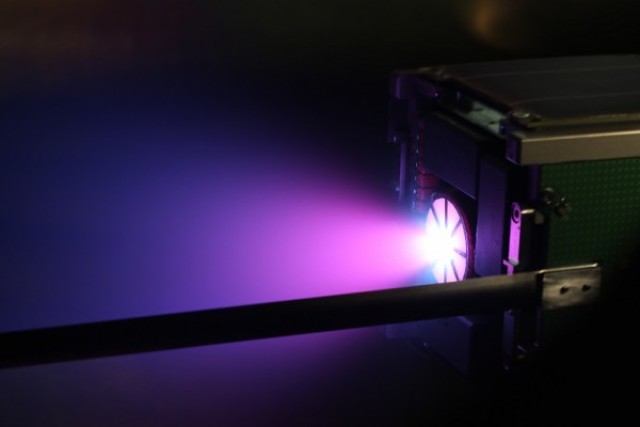It will help solve the problem of space debrisMOSCOW, September 30.
/tass/. The VERA pulsed plasma engine, developed at the National Research Nuclear University (NRU) (Moscow Engineering Physics Institute, MEPhI), was tested for the first time during a real space flight and confirmed its operability. This was reported to TASS on Friday in Sitronics Group.
"The first tests of the VERA (Volume-Effective Rocket-propulsion Assembly) pulsed plasma engine were passed during a real space flight. The tested propulsion system is on board the CubeSX-HSE-2 nanosatellite of the Higher School of Economics (HSE)," the Sitronics Group stressed.
The test events consisted of several manually controlled discharges in the engine. The task of the tests was to check the operability of all systems. "The efficiency of the propulsion system has been confirmed: the capacitor charging system on command from the Ground regularly charges the capacitor bank, the discharge initiation system on command from the Ground regularly performs its work," the IT company said.
The HSE CubeSat 3U space mission is being implemented with the support of the Innovation Promotion Fund within the framework of the "Planet Duty Officer" competition. The spacecraft platform is manufactured by Sputnix (part of the Sitronics Group). According to the company, in order to conduct longer tests that allow for a noticeable orbital maneuver, it is necessary to update the software of the satellite platform, which is what Sputnix engineers are currently doing.
In the case of a successful demonstration of orbital maneuvering, Laser Ai LLC, a small enterprise of the Institute of LaPlaz of MEPhI, responsible for the development of the VERA propulsion system, will begin its serial production next year.
The VERA engine will allow small satellites to occupy and then effectively maintain the necessary positions in the orbital plane for a long time. In addition, the plasma engine will help solve the problem of space debris. Nanosatellites equipped with engines can independently reduce the height of the orbit at the end of their life, thereby reducing the time to combustion in the upper atmosphere by 2-3 times.

